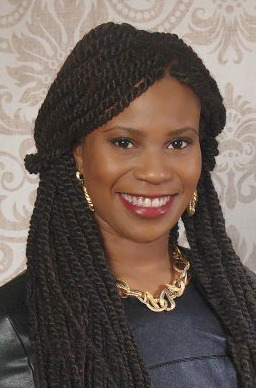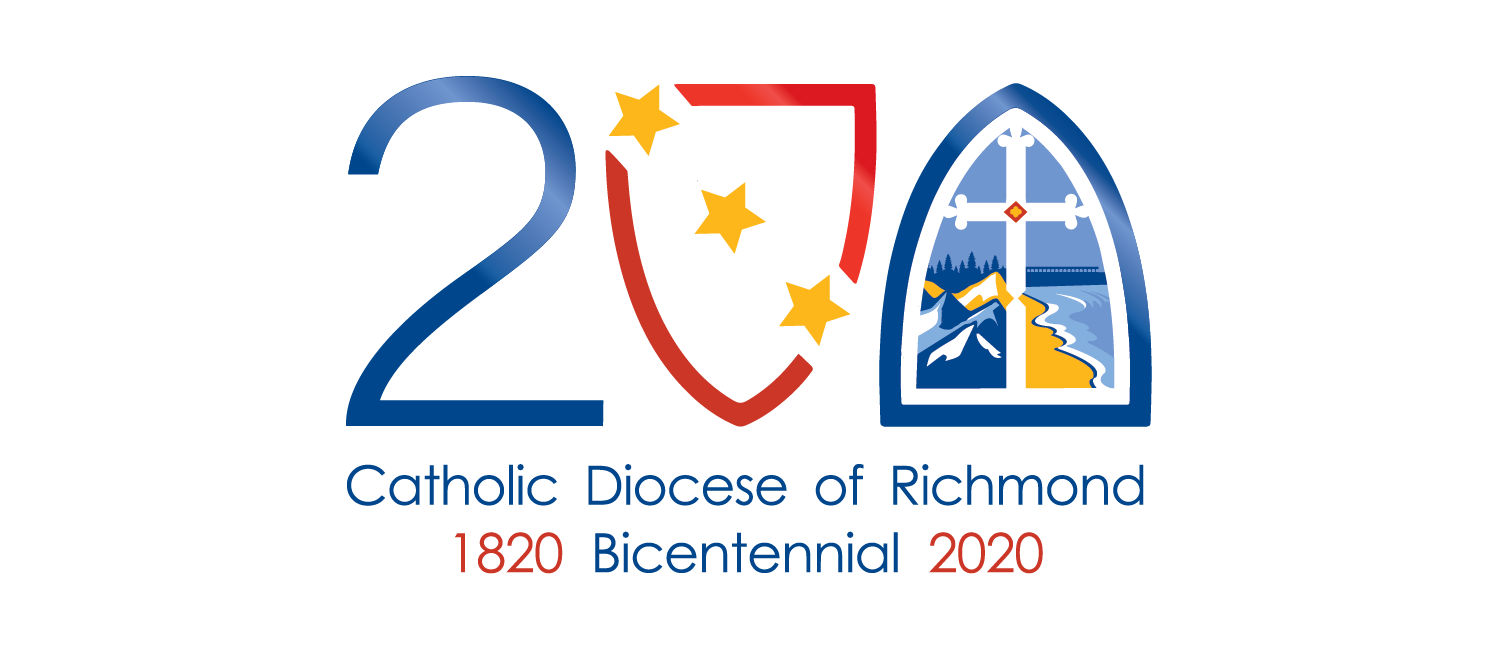Shari Evans’ entry wins competition
Following a five-month competition in which the Catholic Diocese of Richmond sought an image to brand its 200th anniversary, an official logo has been selected.
The bicentennial year will officially begin on Jan. 19, 2020, with a Mass at Basilica of the Immaculate Conception of the Blessed Virgin Mary, Norfolk, and be celebrated into January 2021. The logo will appear on diocesan communications including the Catholic Virginian, print and digital materials, the bicentennial website that is currently under construction and on banners to be displayed at special Masses celebrated by Bishop Barry C. Knestout throughout the year.

Shari Evans, a parishioner at the Basilica of St. Mary of the Immaculate Conception in Norfolk, the oldest Catholic community in the Diocese of Richmond, submitted the winning logo design for which she was awarded $750.
She is the senior designer for three proprietary schools and a military aviation museum in Virginia Beach.
Her basic design process includes researching concepts that are already being used and sketching some ideas, but most importantly she likes to have a conversation with the person or organization with whom she is working.
Since Evans didn’t have the ability to discuss specifics with anyone from the diocese, it was a matter of reading the contest guideline packet and determining what the diocese was looking for in the logo.
“All I had was the packet, so I read it to find out the most important elements,” she said.
Evans considered using the word “bicentennial” in the logo but decided to go with the number “200” instead.
“Just the number 200 is strong. For example, a little kid might not know what bicentennial means, but they know that 200 is a large number, and we’re celebrating a large number of years,” she said.
One of the most eye-catching elements of Evans’ design is the stained-glass window that comprises the second zero.
“Whenever I think of light, faith, religion, I think of light from stained-glass windows coming into the church during a service. It sticks with me,” she said, explaining that her design mimics what she would see at Mass on Sundays before renovations at the basilica began.
The design of the cross was taken from one of the basilica windows and divides the zero into two window panes. The right pane shows the eastern shore of the diocese while the left depicts the mountains that make up the Cumberland Gap, a landmark which is referred to in the bicentennial prayer.
‘Beauty in simplicity’
The stars in the first zero and the jewel in the center of the cross were taken from the diocesan shield, and the colors used in the bicentennial logo match the red, blue and gold of the diocesan shield.
“I just felt like based on what the packet said, I couldn’t not use the crest,” explained Evans. “The theme is ‘shine like stars’ and the crest has stars, so I couldn’t not use it. So I deconstructed the crest itself and took the parts I felt I could use.”
Michael School, project manager of the Bicentennial Planning Task Force, said that the goal was to have the bicentennial logo pay homage to the diocese’s very long history and also look to the future.
“There was professionalism in capturing the spirit of the Diocese of Richmond and an inclusiveness,” he said of Evans’ submission. “There was a simplicity to the design, and there was beauty in that simplicity.”
Evans described getting to the product that she submitted as an “organic process,” explaining that she manipulated various aspects of her design to find what ultimately worked best.
Evans worked on her submission for about two weeks after her regular work hours and while caring for her 1-year-old son, Julien. She added that her husband, Anthony, is great at entertaining Julien if she decides to work before he goes to bed.
‘The creative kid’
Evans has always enjoyed art.
“I was the kid who painted everything,” she said with a laugh. “I was the creative kid.”
Although Evans did not attend college for painting, the graphic design program she completed at Hampton University in 2006 included painting courses. She earned a Master of Fine Arts in visual studies from Norfolk State in 2015.
Evans even completed a painting inside the church when it was needed.
“I do some commissions, too, but I really haven’t done a whole lot of that since I had my son,” she said. “I have a corner of my bedroom set up just for canvasses, so hopefully I’ll be able to get back into that soon.”
Her maternal grandmother Juliette, after whom her son is named, was a big inspiration for Evans in her faith and her art.
“She was a member of St. Joseph. She’s the one who basically showed me the way as far as being Catholic. She was an artist and very creative,” said Evans.
Strong faith an inspiration
The strong faith inspired by her grandmother is what ultimately led Evans to enter the bicentennial logo contest.
“I’ve been in a period of transition, or I wanted it to be a period of transition,” she explained. “I felt like there were some things I needed to be doing – bigger things. I was putting my feelings out all over the place, and I just felt like I wasn’t getting back what I thought I would.”
The bicentennial logo contest came at a time when Evans needed something concrete on which to focus.
She learned about the logo competition at the young adult ensemble, part of the parish’s music ministry, when someone posted a link to the contest information.
“I clicked on it and thought, ‘I’m going to do this,’” Evans recalled. “I’m very into the Church and faith, so it was like, ‘If I’m going to lend my talent to something, this should be it.’”
It was still early in the competition, so she decided to wait on it for a while, but she got several reminders from friends who thought she should enter.
“(The reminders) were put in my path to keep me encouraged to finish and keep me confident in what I can do. I told myself that,” Evans said.
‘God heard me’
The Bicentennial Planning Task Force received 48 logo entries and appointed a committee that took about two weeks to narrow the field and select a winner.
All 48 logos were printed and scattered across a table. First, the committee eliminated the designs it felt did not meet the criteria set forth in the competition guidelines. From there, additional boxes about specific details were checked.
Bishop Knestout made the final decision in choosing the logo that best represents the spirit of the bicentennial.
School initially emailed Evans about her winning logo. He said she was “very excited, very humbled and very surprised” when he spoke to her.
“It felt so good. It felt like God heard me, and I felt like I made my family proud, but I also felt like I had a place in a way I hadn’t before I won this contest,” Evans said. “I can never see it in the moment, but the gratification in the end is that I matter, I belong, and I have a place.”
After speaking with Evans, the task force asked her to assist with some additional graphic design work throughout the bicentennial year, which she accepted.
“The whole process made me recognize that God is always working in my life and realizing that had it been at any other point (in my life), I wouldn’t have entered the contest,” she said. “If I had been successful in another place, I wouldn’t have done it, and out of all of those opportunities, this is the most gratifying just because of who and what it’s for.”

